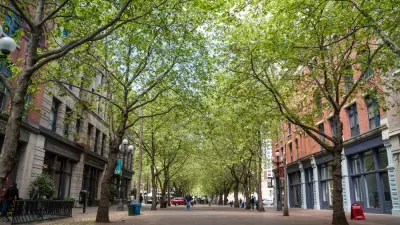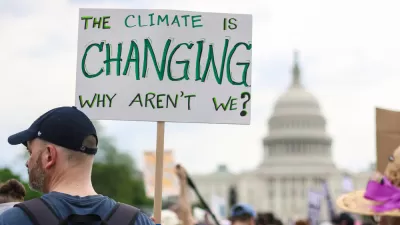The draft of a new report issued last week by the U.S. government concludes the impacts of climate change are spreading faster than previously predicted.
Authored by 240 scientists, business leaders and other experts, the draft of the Third National Climate Assessment [PDF] that was released last week "delivers a bracing picture of environmental changes and natural disasters that mounting scientific evidence indicates is fostered by climate change: heavier rains in the Northeast, Midwest and Plains that have overwhelmed storm drains and led to flooding and erosion; sea level rise that has battered coastal communities; drought that has turned much of the West into a tinderbox," reports .
"Climate change, once considered an issue for a distant future, has moved firmly into the present," the report says. "Americans are noticing changes all around them. Summers are longer and hotter, and periods of extreme heat last longer than any living American has ever experienced. Winters are generally shorter and warmer."
"The findings in the report are a three-alarm fire," said Rep. Henry A. Waxman (D-Beverly Hills). "Climate change is already causing widespread disruption across the nation. We are in deep trouble if we don't act forcefully this year."
Over at The Washington Post's Wonkblog, Brad Plumer shares one of the more striking graphics from the report, which shows projected temperature changes by 2100 under four different scenarios. Under the most extreme (but entirely plausable) scenario, "in which we continue to burn fossil fuels at our current rate with no effort to tackle emissions....average temperatures in the United States rise somewhere between 5°F and 10°F by century’s end (or 2.8°C to 5.5°C)," notes Plumer. "A few parts of the country get up to 15°F hotter. Needless to say, that’s significant."
FULL STORY: Climate assessment delivers a grim overview

Alabama: Trump Terminates Settlements for Black Communities Harmed By Raw Sewage
Trump deemed the landmark civil rights agreement “illegal DEI and environmental justice policy.”

Planetizen Federal Action Tracker
A weekly monitor of how Trump’s orders and actions are impacting planners and planning in America.

Why Should We Subsidize Public Transportation?
Many public transit agencies face financial stress due to rising costs, declining fare revenue, and declining subsidies. Transit advocates must provide a strong business case for increasing public transit funding.

Understanding Road Diets
An explainer from Momentum highlights the advantages of reducing vehicle lanes in favor of more bike, transit, and pedestrian infrastructure.

New California Law Regulates Warehouse Pollution
A new law tightens building and emissions regulations for large distribution warehouses to mitigate air pollution and traffic in surrounding communities.

Phoenix Announces Opening Date for Light Rail Extension
The South Central extension will connect South Phoenix to downtown and other major hubs starting on June 7.
Urban Design for Planners 1: Software Tools
This six-course series explores essential urban design concepts using open source software and equips planners with the tools they need to participate fully in the urban design process.
Planning for Universal Design
Learn the tools for implementing Universal Design in planning regulations.
Caltrans
Smith Gee Studio
Institute for Housing and Urban Development Studies (IHS)
City of Grandview
Harvard GSD Executive Education
Toledo-Lucas County Plan Commissions
Salt Lake City
NYU Wagner Graduate School of Public Service





























